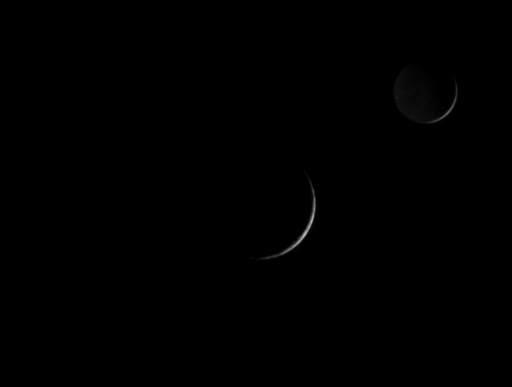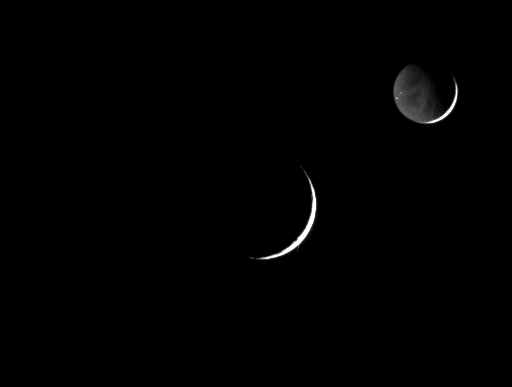Emily Lakdawalla • Jun 28, 2011
Cassini animations: Rhea and Dione and Titan
I've been mucking about in the Cassini data archives (as I often do when procrastinating) and unearthed a neat, if short, mutual event sequence of two crescent moons passing by each other: Rhea, in the foreground, and Dione behind.

This set of images provides an example of what a difference a choice of contrast adjustment can make to the appearance of an image. The version above I brightened enough to reveal the crescent-lit terrain without saturating it. Here's another version, in which I cranked up the contrast, saturating the crescent parts, but also revealing some surprising details on the night side of Dione. What's surprising is that Dione's nightside is visible but Rhea's is not. The nightside lighting is Saturnlight -- that is, light that reflected first off of Saturn before striking Dione. How is it possible that Dione can be Saturnlit but not Rhea? Think about it a bit, then scroll down for an explanation.

The reason we see Saturnlight on Dione and not on Rhea begins with the fact that Cassini was on the opposite side of Saturn from the Sun (which you can tell from the extremely crescent phases of the moons) when the photos were taken. Rhea was on the same side of Saturn as Cassini while Dione was on the opposite side of Saturn from Cassini. So the face of Dione that Cassini could see is the side that faces Saturn and hence receives Saturnlight; the face of Rhea that Cassini could see is the side that faces away from Saturn, so sees only black space. This diagram should help you visualize it:

And because one cool Cassini animation deserves another, I share with you a bonus awesome color view of a recent mutual event between Rhea and Titan, assembled by unmannedspaceflight.com's Astro0:
The Time is Now.
As a Planetary Defender, you’re part of our mission to decrease the risk of Earth being hit by an asteroid or comet.
Donate Today

 Explore Worlds
Explore Worlds Find Life
Find Life Defend Earth
Defend Earth

